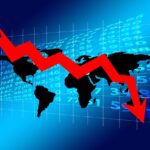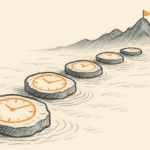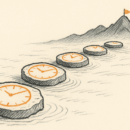As Hurricane Sandy showed, a crisis is a leader’s true test
“Prior to Sandy’s landfall, New Jersey Governor Chris Christie had brutally attacked President Obama’s leadership credentials in his keynote address at the Republican convention. And President Obama was focused on his re-election campaign, increasingly attacking Republican positions. But a crisis makes strange bedfellows, and this week, these political enemies together toured the damage, comforted victims, and publicly thanked each other for their leadership and help.
In the aftermath, pundits sneered at the so-called “bromance” between the Governor and the President. But overcoming differences is a form of grown-up behavior that has been missing in a number of very public and vitally important crises that affect government and business.”
LAUREN STILLER RIKLEEN, HBR Blog Network (November 2, 2012)
You may have noticed: the United States just survived a hurricane of horrific power. And managed to complete a huge election at the same time. The number of casualties, given the scale of Hurricane Sandy, were minimal. So was the disruption to the economy. America is back at work, under a newly re-elected president. That requires great applause.
Now consider this. What if a storm of that magnitude hit Nairobi and its environs? How many deaths would we be looking at? For how long would we stay without power, water, security or internet connectivity in the aftermath of the crisis? And what if it all happened in the middle of our forthcoming general election?
You don’t need an especially powerful crystal ball to work out what might happen. I think we can agree the consequences don’t bear thinking about. Given that our power, water, security and other service providers can’t seem to maintain a proper service level even in normal, everyday circumstances, their ability to cope with a widespread external shock…well, let’s just leave it there.
Now, it is easy to explain this using infrastructure and facilities as the key difference. New York and its neighbours are wealthy; we are not. They have equipment and machinery; we do not. So they survive these shocks; we might not.
That is the lazy reason. The real one is somewhat different, as uncovered by Lauren Rikleen in an HBR blog recently (see excerpt), and it is this: they have leadership; we do not.
Societies survive a crisis because they have leaders to guide them through it. As Ms Rikleen pointed out, President Obama and New Jersey Governor Christie demonstrated some excellent leadership traits during the Sandy onslaught. They overcame their political and personal differences to work together to save lives, for one thing. They communicated quickly and clearly, for another. And they ensured they took personal charge of matters to ensure decisions were made fast and resources moved to where they were most needed.
The Governor and the President also rolled up their sleeves and got down to where the action was. They were on the ground to see the scale of the disaster for themselves, not awaiting reports from underlings. They put their arms round people and promised hope for those rendered helpless. They acted as beacons of leadership at a dark time.
That is exactly what we don’t have here. A crisis would lead to more crises, because our leaders would fail to rise up to the challenge. There would be name-calling and blame games. There would be cheap political stunts and vapid statements. Decisions would not be forthcoming, just vague promises. And all of this would be done aloof from the pain of the people, secure in protected offices. And this would happen as lives continued to be lost.
A crisis is a time when you see what your leaders are made of, what they are capable of, how far they can forget their own needs, in the service of others. If you can’t lead during a crisis, you have no business leading at all.

Buy Sunny Bindra's new book
The X in CX
here »
Popular Posts
- Where are you rushing to—your funeral?June 29, 2025
- How to spot a real thinkerJune 15, 2025
- The pause that saves usJune 8, 2025
- Built the app, forgot the flowJune 22, 2025
- The map will appear—once you start walking.July 6, 2025















